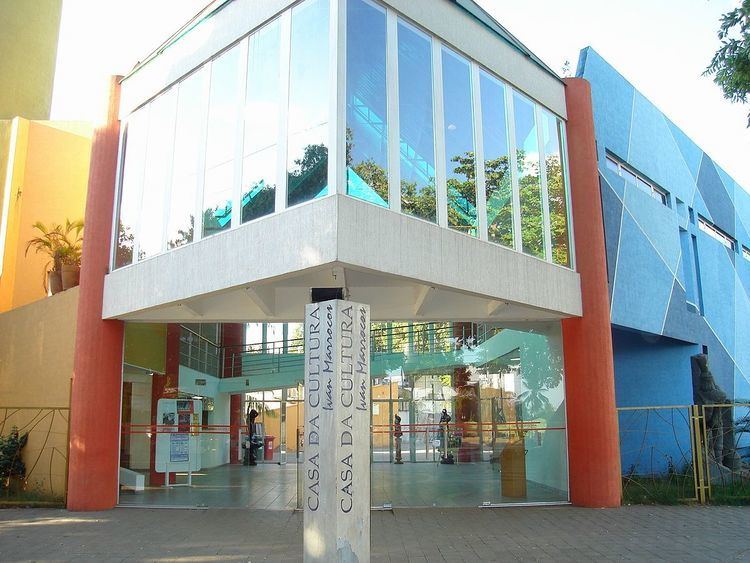 | ||
The Culture of Porto Velho is marked by the strong influence of the Northeast, with Boi-bumbá the juninas and Pastorinha. The interpretation of Indian legends, such as the Iara, the Boto and Mapinguari indicate the folklore place, influenced by migrants. As for handicrafts, there are various exhibitions of indigenous works, utilities and adornment, using clay as raw material, vines, bamboo, rubber. The Artisan's House serves as a support to the initiatives of the genre.
Contents
Libraries
The collection of municipal Porto Velho was waiting for his permanent headquarters for several years until recently was completed works of the Municipal Library next to City Hall. The space has two floors with air-cooled in the city center.
Carnival
The Carnival takes place every year, attracting a large number of people from other cities and states of Rondônia neighbors. During the carnival, there are the parades of carnival and samba schools, which can mention, among the best known, The Diplomats, Asfaltão, among others.
In July Carnival happens Out of Season, with characteristics of the Bahia Carnival, with electric trios and groups Axe .
Theatres
Two theaters enliven the cultural sector: The Municipal Theater, Avenida Nabuco (center) and Theatre Uirassu Rodrigues, Jose Bonifacio Street.
Museums
In railway complex, is located the Museum of Railroad Madeira-Mamore, in the city center lies the State Museum, with abundant material on archeology, ethnology and Mineralogy.
Museum of Railroad Madeira-Mamore
At the Museum, housed in a warehouse loading and unloading almost centenary, one can see hundreds of materials preserved railway. The museum has several pieces from the time of its construction and operation. Besides the first locomotive brought to the Amazon, the Colonel Churchill, we enjoyed also a stork and a tricycle, used to transport the line foremen who fiscalizavam, lathes, machines, furniture, photographs of workers, books, documents and more . The museum is located at Avenida September 7 - Railroad Square Madeira-Mamore. Outside the museum, waterfront, you can take a ride in one of the "barges" to Teotônio waterfall.
The Three Boxes Water
Also known as The Three Marias, the water tanks are in the center of town, in the square of the same name. The first was erected in 1910 and the other two in 1912 . Were designed and built by Chicago Bridge & Iron Works of Chicago as information contained in cast-iron plate, carved pilasters on each of them. There are three tanks form cylindrical, covered with metal sheets conical shape, and concave shaped base. Each tank is elevated from the floor by four columns made of iron lattice on concrete foundation. They are at the height of the bulge surrounded by a walkway railing with metal lattice through which arrives via a ladder. Each reservoir has a capacity for 200,000 liters and served to supply the city of Porto Velho by the year 1957, working by gravity.
The Cathedral of the Sacred Heart of Jesus
The Cathedral had its construction inicada in 1917, but was completed only ten years later because of difficulties in transporting material. Original paintings of a religious nature inside the Cathedral, were executed by Father Angelo Cerri and Alfonso Liguori. The stained glass windows that surround it, with the themes of the Cross, were all donated by the community-velhense port.
